| For the right side driveshaft, this was
an absolute nightmare from hell. On both cars.
Neither Haynes nor RTA nor the factory manual offer advice on this
job. The complication comes from the fact that the splined
end of the driveshaft must be PERFECTLY aligned with the hole
in the differential. This is tough to do because the driveshaft
is heavy, and there's little room through the holes in the crossmember
to reach up and position it. So, here are a few comments from my
experience in wrestling with the thing. |
| 1.
Item 8 on the below photo. I learned this lesson the hard way.
Once the driveshaft is in place, there is not enough room between the
Triax casing and the holes for the ear-bolts to get the bolts in
place. So, guess what, the driveshaft has to come back out.
Realising this after you have spent two hours wrestling with the
driveshaft will completely spoil your day.
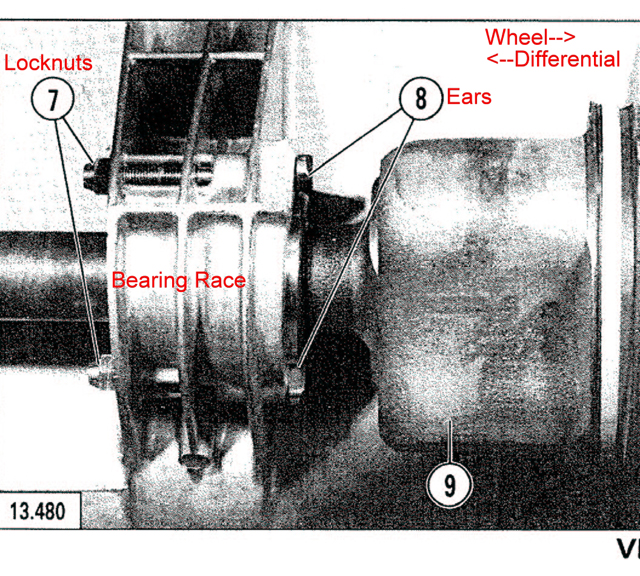 |
| 2. Disconnect the anti-roll bar
link. You might not have disconnected it when you removed the
driveshafts. having it out of the way will make setting the
driveshaft in place easier. There is not much clearance between the
vertical frame member and the link. The shaft may have been easy
to remove if you did an episiotomy on the boot. But with a new
boot and
Ligarex, there is not much room. |
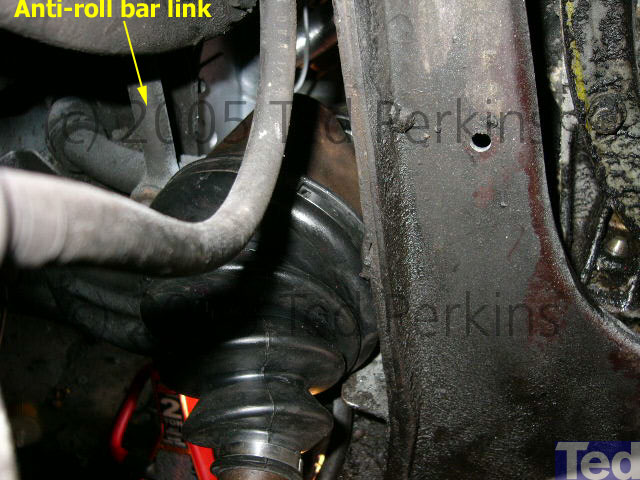 |
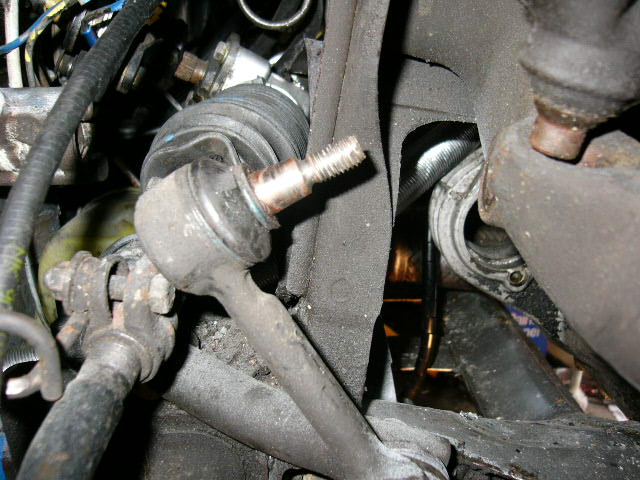 |
| 3. Support the upper control arm and the
driveshaft with ratcheting tie-down straps.

I like the ratcheting tie-downs better than bungee cords because
you can adjust the length of the strap exactly.
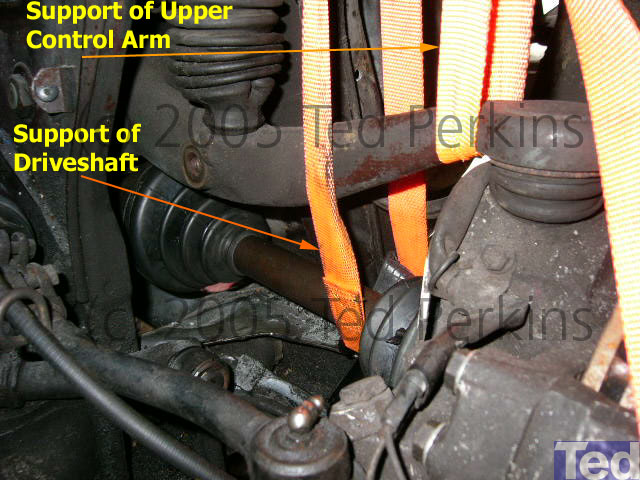
You want to set up the upper control arm first. Try to get
the hole on the hub aligned with the mid-shaft bearing and the
differential. You'll have to do it by eye; try to
get it close. |
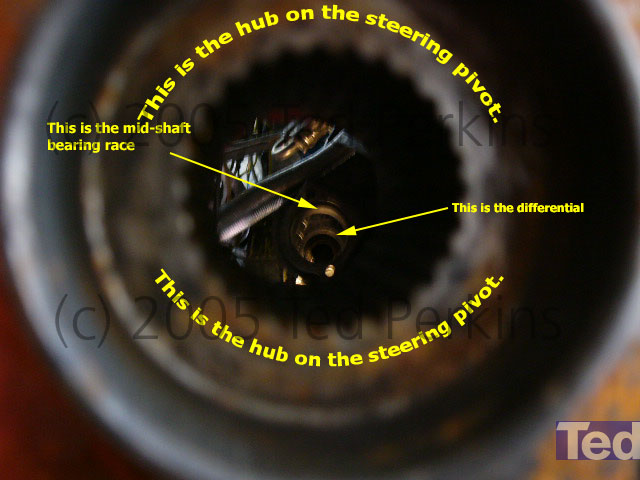 |
| Put some grease on the splined end of the
driveshaft |
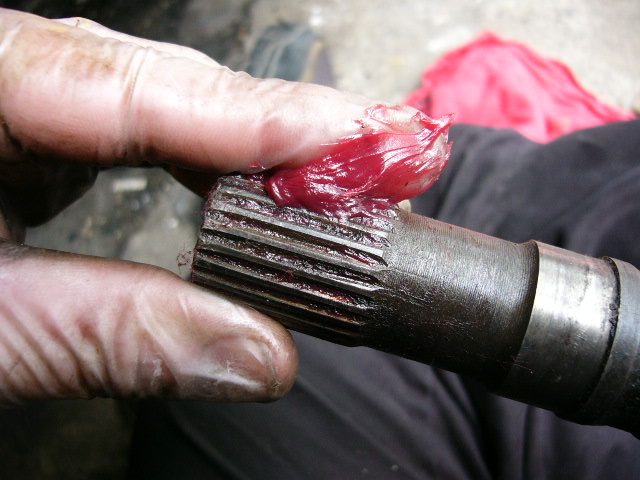 |
| Run the end of the driveshaft through the
bearing race. You may want to put some grease on the bearing
race as well. |
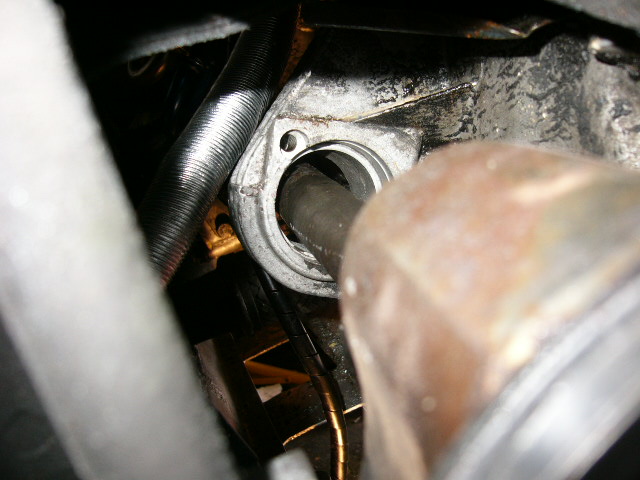 |
| Wiggle the steering pivot and the outside
end of the driveshaft to get the end of the shaft through the hole in
the pivot. |
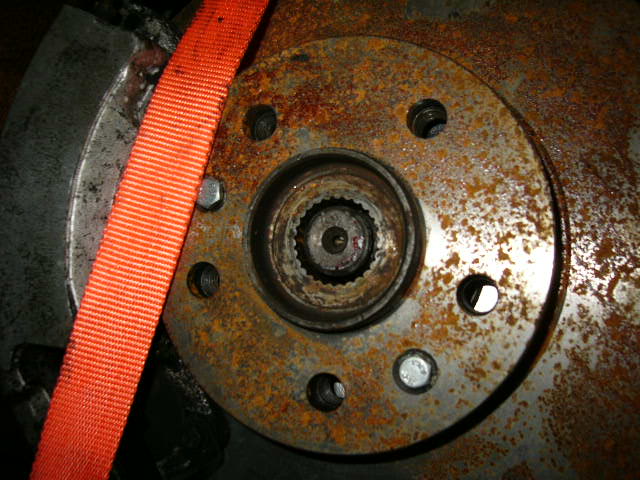 |
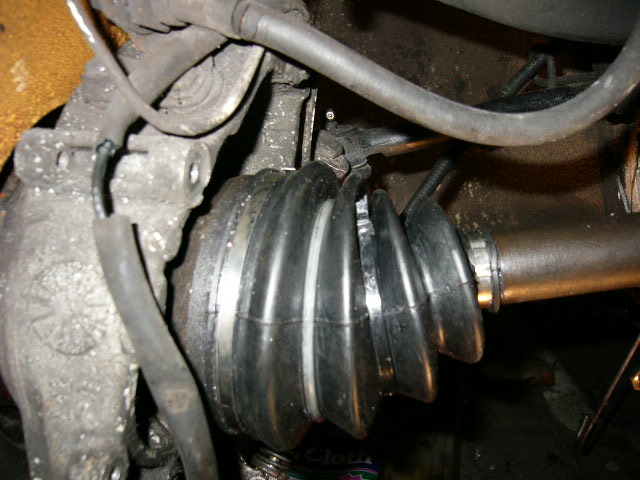 |
| Don't forget to put on the big rubber
dust shield, the white plastic ring, and the o-ring at the end of the
driveshaft. You will have to run the driveshaft through the middle
bearing race first, then reach up through the holes in the frame to
put the rings in place. |
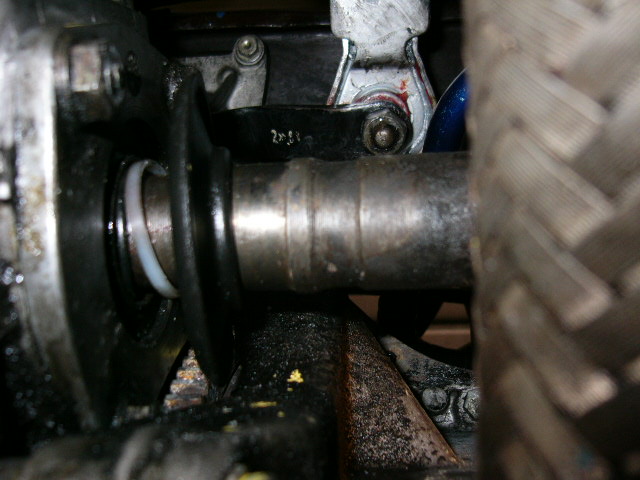 |
| When the mid-shaft bearing is about 2-3
cm from the bearing race, thunk! The driveshaft hits up against
the differential. |
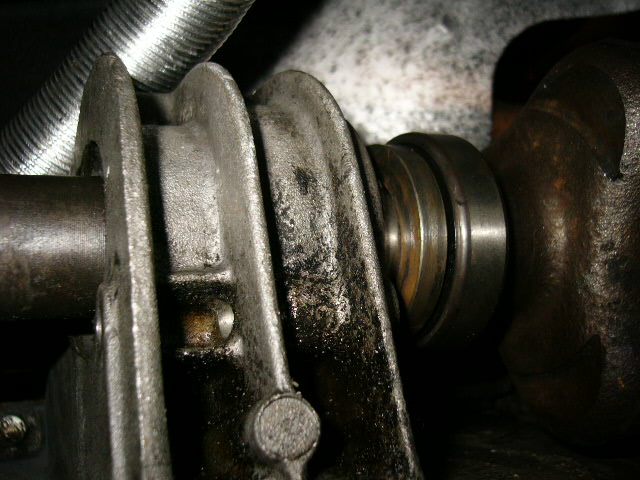 |
| This is when it is important to
support the driveshaft with the second ratcheting tie-down. |
 |
| You'll have to alternate from under the
car to next to the car to get things aligned properly. The best
thing to watch is the mid-shaft bearing and the bearing race. If
the bearing is correctly aligned to the bearing race, the end of the
driveshaft will be aligned to the hole in the differential. This
is where the ratcheting tie-down is helpful, as it allows you too set
the loop exactly so that the driveshaft is supported at the exact
height. |
Once the strap is supporting the
driveshaft, it's time to push it into the differential. I found the
best way to do this is to:
- hold the driveshaft at the differential with my left hand.
SInce the weight of the driveshaft is supported by the tie-down
strap, I'm not supporting the whole weight of the driveshaft with
one hand.
- hold the brake disk with my right hand. Remember, the
weight of the steering pivot is supported by the the tie-down strap.
- adjust the driveshaft up & down, side-to-side with my left hand
- turn the driveshaft with using the brake disk - the splines on
the shaft have to align with the splines in the differential
- tap the end of the driveshaft with the entire steering pivot
using the brake disk. No need to use a lot of force. If
the shaft is not aligned, it won't move. You will tell by the
vibration in your right hand when you tap the steering pivot on the
outside end of the driveshaft. If it is aligned, the
shaft will move into the hole. The vibration in your right
hand will be different because some of your tapping is being
absorbed by the shaft's movement into the hole. you can
also tell by watching the mid-shaft bearing move into the bearing
race. Once the bearing is in the race, the race is now
supporting the shaft, in perfect alignment with the differential.
The shaft will slide in much more easily now.
- You can tell when the shaft is in far enough by using the
dog-ear bolts. The dog-ear end must be completely within the
slots in the bearing race. If you run your finger along the
outer side of the race, you should only feel the slots for the
bolts, not the heads of the bolts.
|
| |
| |